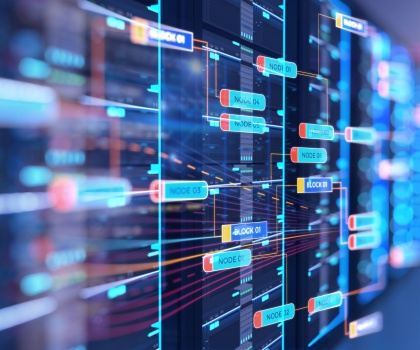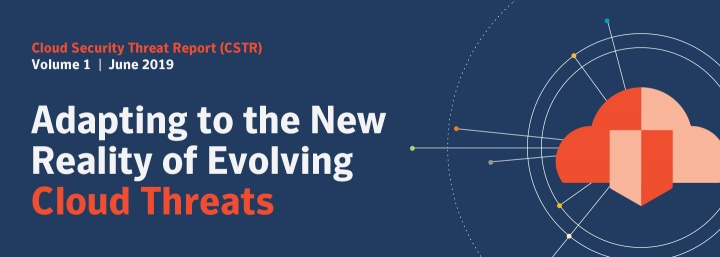Cloud Security is Overwhelming. AI and Machine Learning Can Help
Learn how AI and machine learning can play a key role in enhancing the capabilities of your security staff
As companies embrace cloud computing, most struggle to keep pace with the increasingly complex environment and an expanding attack surface that challenges long-standing security conventions.
The sheer volume of devices, applications, and users working in the cloud creates an ecosystem that is far too complex and high-volume to be safeguarded by human security analysts. Companies need to bolster their security teams and practices with machine learning and artificial intelligence (AI) capabilities in order to have the best chance at maintaining visibility, mitigating risk and optimizing for their most precious resource: human analysts.
Cloud growth creates new security threats, and organizations are struggling. According to Symantec’s first Cloud Security Threat Report (CSTR), which surveyed 1,250 security decision makers worldwide, an overwhelming majority of respondents (93 percent) confirm they are having trouble keeping tabs on all cloud workloads while over a third (34 percent) said expanding cloud infrastructure has made it more complex and difficult to effectively manage their environments.
Unfortunately, there is more troubling news: Eighty-three percent of global CSTR respondents report a negative impact due to lack of visibility in the cloud and nearly three-quarters (73 percent) say their organizations have experienced a cloud-based security incident due to immature security practices. Over half (54 percent) say cloud security maturity is not keeping pace with the rapid expansion of new cloud apps, and 71 percent report an increase in IoT devices connected to Infrastructure-as-a-Service (IaaS), at a pace of around 20 percent growth just this last year. The deluge of new connected devices only serves to broaden an already expansive attack surface.
Cloud growth creates new security threats, and organizations are struggling.
At the same time, the increased use of cloud apps to access and share private information is leading to increases in Shadow Data and oversharing of corporate files. Another indication of immature cloud security practices and inadequate protections is that 68 percent of responding firms report having “direct or likely evidence” that their data has been offered up for sale on the dark web.
The fact that companies have not the time or the bandwidth to keep up with the sheer volume and variety of on-going incidents is the root of the problem. Fewer than half (43 percent) of CSTR respondents report they analyzed all cloud security incidents encountered over the last year, and almost half (49 percent) said their organization’s cloud security team was far too overloaded to address the bulk of alerts they receive. Only one in 10 survey respondents say they can adequately analyze cloud traffic, while less than a third (27 percent) are confident all cloud security alerts are fully addressed by their security teams.
The primary culprit for the shortfall is a skills and security personnel shortage. CSTR respondents almost unanimously agreed that they need to enhance cloud security skills (92 percent) and add staff (84 percent) in order to close the gap.
Elevating Cloud Security
AI and machine learning can play a key role in enhancing the capabilities of security staff. An integrated security platform that utilizes AI and machine learning reduces the burden on security teams by automating the process of combing through telemetry data to find critical insights that will boost a security posture. Massive amounts of data like the 9 trillion rows of telemetry monitored daily by Symantec’s Global Intelligence Center, can be analyzed with AI to create context and relationships. This task would be impossible for a human analyst.
In addition, machine learning and AI can also be used to facilitate a risk assessment of an organization’s security posture. By deploying the technologies to parse through vast amounts of disparate data, organizations can identify their most prominent areas of risk and prioritize resources accordingly.
Machine learning models learn from the telemetry and combine different events that are seemingly unrelated, but if combined together with enough context, can identify a critical incident that would likely go unnoticed by an individual. Using machine learning and AI, Symantec is able to identify dramatically more critical events as part of its own security services than it could prior to use of the technologies.
There’s a lot of moving parts in the cloud and you don’t necessarily have a full picture of what’s going on. To effectively harness AI and ML on the you need massive amounts of unbiased data. The recommended way to get this is by working with a partner that has global telemetry monitoring and analytics of cloud security incidents, and a proven track record with AI and ML. By doing so, you’ll have full confidence that the proverbial needle in the haystack won’t be missed, less obvious connections will be made, bad actors will be stopped, and that your company is properly safeguarded against potential risks.
Thankfully, prior research in this space arms us with optimism and the experience necessary to make this happen.
July 25th Webinar: Understand the Latest Cloud Security Trends

Symantec’s Cloud Security Threat Report Shines a Light on the Cloud’s Real Risks
What are the real cloud security challenges your enterprise faces — and what can you do about them? Read on











We encourage you to share your thoughts on your favorite social platform.